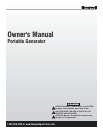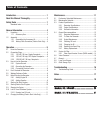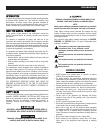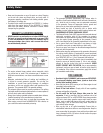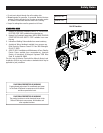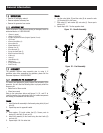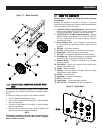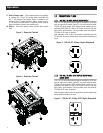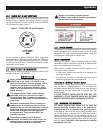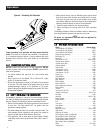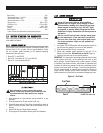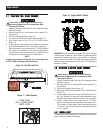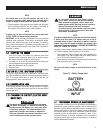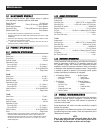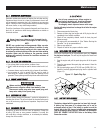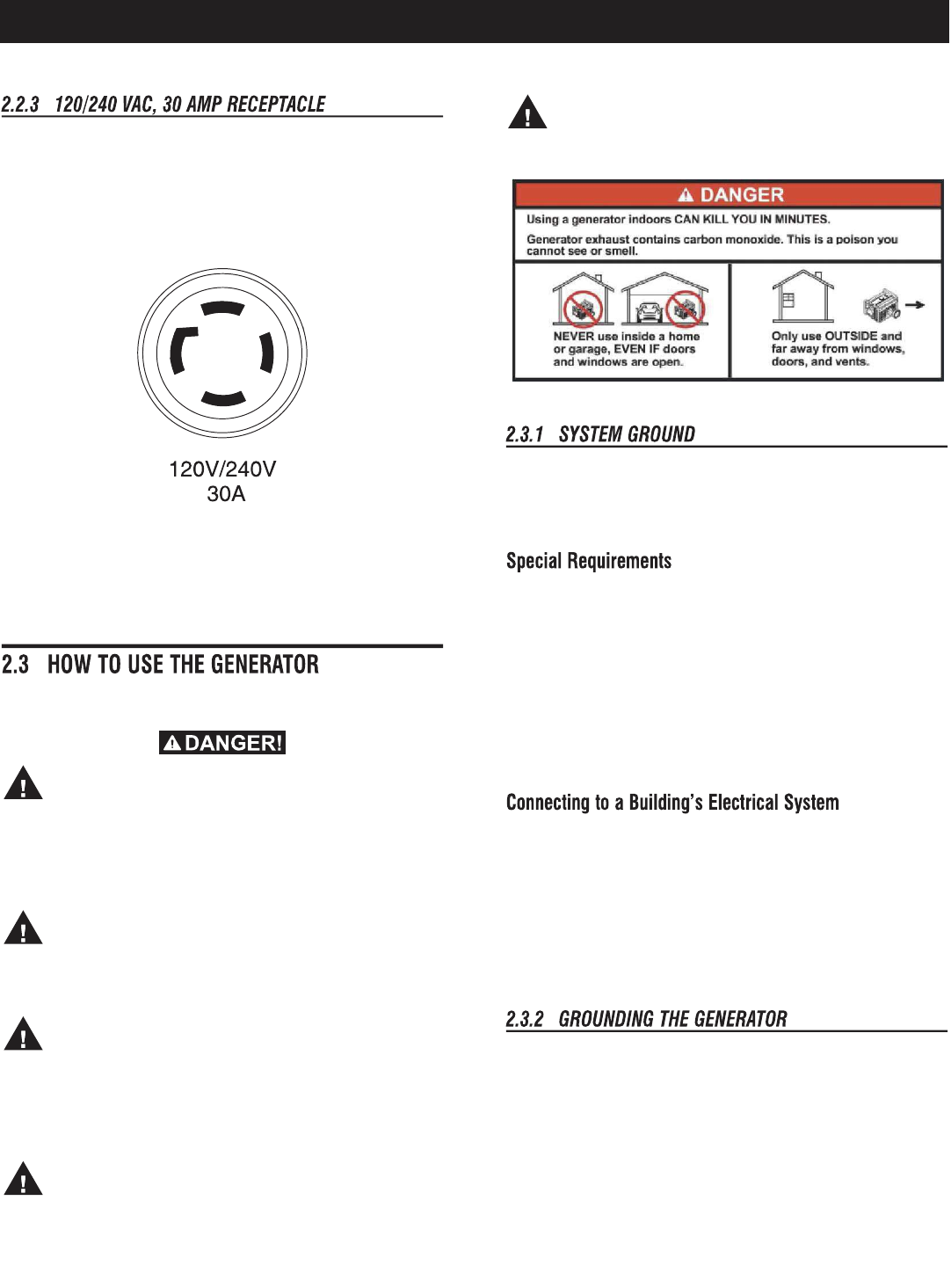
7
Use a NEMA L14-30 plug with this receptacle (rotate to lock/
unlock). Connect a suitable 4-wire grounded cord set to the plug
and to the desired load. The cord set should be rated for 250 Volts
AC at 30 Amps (or greater) (Figure 7).
Figure 7 - 120/240 VAC, 30 Amp Receptacle
Use this receptacle to operate 120 Volt AC, 60 Hz, single phase
loads requiring up to 3600 watts (3.6 kW) of power at 30 Amps or
240 Volt AC, 60 Hz, single phase loads requiring up to 7200 watts
(7.2 kW) of power at 30 Amps. The outlet is protected by a 2-pole
toggle switch circuit breaker.
If there are any problems operating the generator, please call the
generator helpline at 1-855-GEN-INFO.
Never operate in an enclosed area or indoors!
NEVER use in the home, in a vehicle, or in
partly enclosed areas such as garages, EVEN
IF doors and windows are open! ONLY use
outdoors and far from open windows, doors,
vents, and in an area that will not accumulate
deadly exhaust.
The engine exhaust fumes contain carbon
monoxide, which you cannot see or smell.
This poisonous gas, if breathed in sufficient
concentrations, can cause unconsciousness or
even death.
Adequate, unobstructed flow of cooling and
ventilating air is critical to correct generator
operation. Do not alter the installation or permit
even partial blockage of ventilation provisions,
as this can seriously affect safe operation
of the generator. The generator MUST be
operated outdoors.
This exhaust system must be properly
maintained. Do nothing that might render the
exhaust system unsafe or in noncompliance
with any local codes and/or standards.
Always use a battery operated carbon
monoxide alarm indoors, installed according to
the manufacturers instructions.
The generator has a system ground that connects the generator
frame components to the ground terminals on the AC output
receptacles. The system ground is bonded to the AC neutral wire
in the generator control panel via a jumper wire.
There may be Federal or State Occupational Safety and Health
Administration (OSHA) regulations, local codes, or ordinances that
apply to the intended use of the generator.
Please consult a qualified electrician, electrical inspector, or the
local agency having jurisdiction:
In some areas, generators are required to be registered with
local utility companies.
If the generator is used at a construction site, there may be
additional regulations which must be observed.
Connections for standby power to a building’s electrical system
must be made by a qualified electrician. The connection must
isolate the generator power from utility power or other alternative
power sources and must comply with all applicable laws and
electrical codes.
A 3-POLE TRANSFER SWITCH MUST BE USED WITH THIS
GENERATOR. A 2-POLE TRANSFER SWITCH WILL NOT WORK
BECAUSE THE NEUTRAL WIRES ARE BONDED TO GROUND.
The National Electrical Code requires that the frame and
external electrically conductive parts of this generator be
properly connected to an approved earth ground (Figure 8).
Local electrical codes may also require proper grounding of the
unit. For that purpose, connecting a No. 10 AWG (American Wire
Gauge) stranded copper wire to the grounding lug and to an
earth-driven copper or brass grounding rod (electrode) provides
adequate protection against electrical shock. However, local codes
may vary widely. Consult with a local electrician for grounding
requirements in the area.
Operation



